Inside the Taj Mahal, is it as beautiful as everyone says?
What are surprises and tips about visiting that we learned during our India teacher tour? Without further ado, here are 12 things to know about visiting the Taj Mahal: the world’s most famous monument to love, built by emperor Shah Jahan in 1653 in memory of his wife.
1. Surprising things NOT allowed inside the Taj Mahal:
There are all sorts of items you are not allowed to take inside the Taj Mahal. Study the sign above and see if you agree that some are more bizarre than others. Motorcycle helmets? Books? Garlands of flowers? What else do you see that surprises you? I can’t even identify some of the prohibited goods!
2. Different lines to get inside for different tickets…
You will have a totally different experience inside the Taj Mahal depending on whether you purchase a “High Value Ticket” (as all foreign visitors seem to), or a “General Ticket.”
This begins from the very moment you walk in the door to the main courtyard: High Value Ticket-holders slide into the yard in minutes, while the General Ticket line stretches for blocks.
3. There is one perfect Taj Mahal photo location.
Don’t do what I did in the picture above and take a hundred photos before you reach the best background! The ideal photo spot is centered directly in front of the Taj Mahal, with the blue pools stretching behind you, as in the picture below.
4. How clear people away from a Taj Mahal photo:
In India there is a person working to do every job imaginable, and in the case of the Taj Mahal, there are men who, for a small tip, will clear away all the annoying people in the background of your photo! It’s totally worth it. Without that man’s help, our photos were basically just our heads peeking above a crowd.
5. Beautiful structures are AROUND the main building.
Don’t neglect the stunning side hallways and smaller buildings surrounding the Taj Mahal. They’re gorgeous, too! Look at that astounding corridor pictured above.
6. Your photos may be hazy due to smog (or “mist”).
Like China, India has some serious air pollution. As a result, it’s hard to even see the Taj Mahal in some of my photos! Be prepared for this to be the case for your pictures. It is worth it to edit the photos afterwards to turn up the clarity and turn down all that white.
7. What’s behind the Taj Mahal?
Speaking of “all that white,” I was entranced by the view behind the Taj Mahal: WHITENESS. There’s a river or swamp there, but it was completely shrouded in mist our entire visit. I found it touching that such a famous work of architecture and well-visited monument has a completely wild “back yard.”
8. The line to get inside the Taj Mahal is not actually long.
First, YES, you CAN go inside the Taj Mahal building! Second, see the ridiculous line wrapping around and around the famous building in the photo below? If you have a “High Value Ticket” (as you likely will), you completely skip that line and go right to the center of the Taj Mahal inside the mausoleum itself, just as you skipped the line to get into the main doors to the courtyard.
9. Shoe coverings inside the Taj Mahal…
Upon walking into the mausoleum when you visit the inside of the Taj Mahal building, you will be given little white paper elf boots to protect the historic ground from your footsies. They look great.
10. Foreigners don’t pay for the bathroom, but Indians do.
This was upsetting. See the sign below.
11. Look closely at the walls inside the Taj Mahal.
I’ve always known the Taj Mahal is one of the most beautiful buildings in the world, but I wasn’t prepared for how stunning the tiny details all over it would be. Ogle these unbelievable feats of marble inlay from the Taj Mahal inside walls.
12. The Taj Mahal completely lives up to the hype.
Like the Great Wall of China or the David statue in Italy, there is some trepidation when heading towards a world-famous place. Will it be as great as everyone says? Hands down, the Taj Mahal is awesome, inside and out. It is utterly worth it, so do what you can to go!
Hotels near the Taj Mahal, Agra:
- Note: These affiliate links below provide a small commission at no extra cost to you.
- Top ratings go to this hotel (click for details and availability)
- Other good options are the Courtyard Agra and Trident Agra (click for pricing)
- Visitors also have positive experiences at the Ramada and the Doubletree
Happy travels, and do feel free to leave comments with your experiences and questions!

The author, Lillie Marshall, is a 6-foot-tall National Board Certified Teacher of English, fitness fan, and mother of two who has been a public school educator since 2003. She launched Around the World “L” Travel and Life Blog in 2009, and over 4.2 million readers have now visited this site. Lillie also runs TeachingTraveling.com and DrawingsOf.com. Subscribe to her monthly newsletter, and follow @WorldLillie on social media!

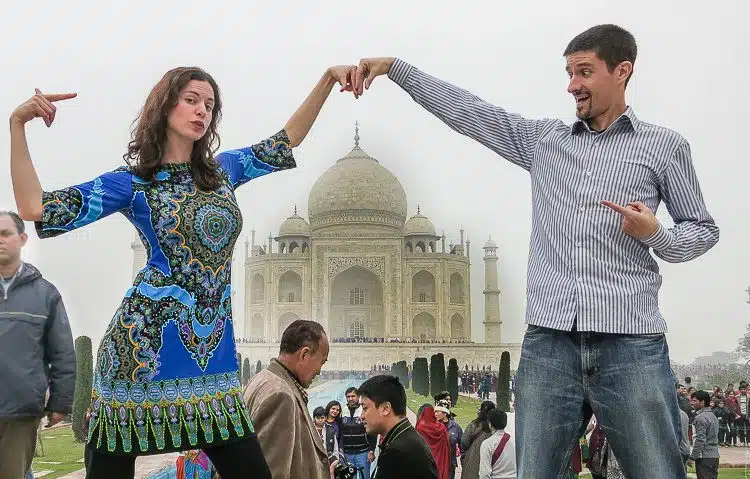
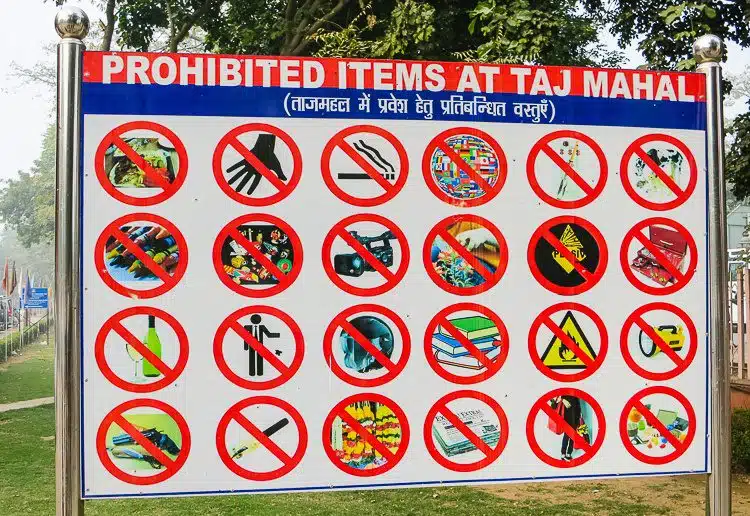
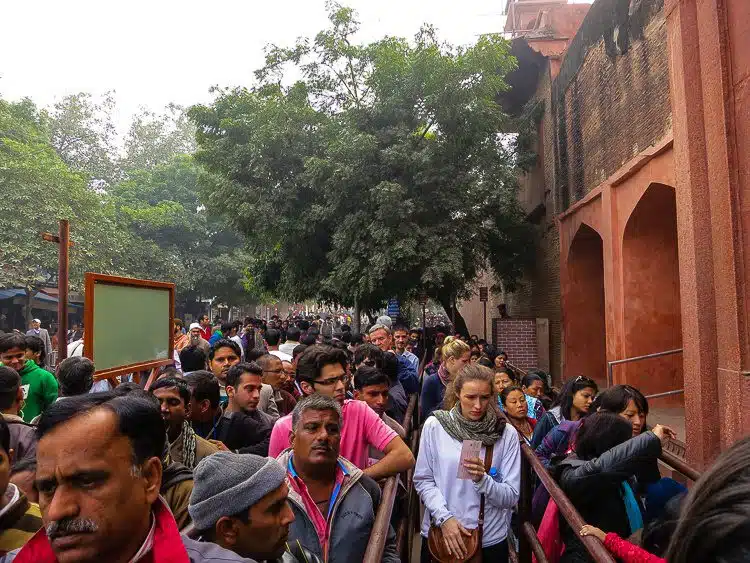
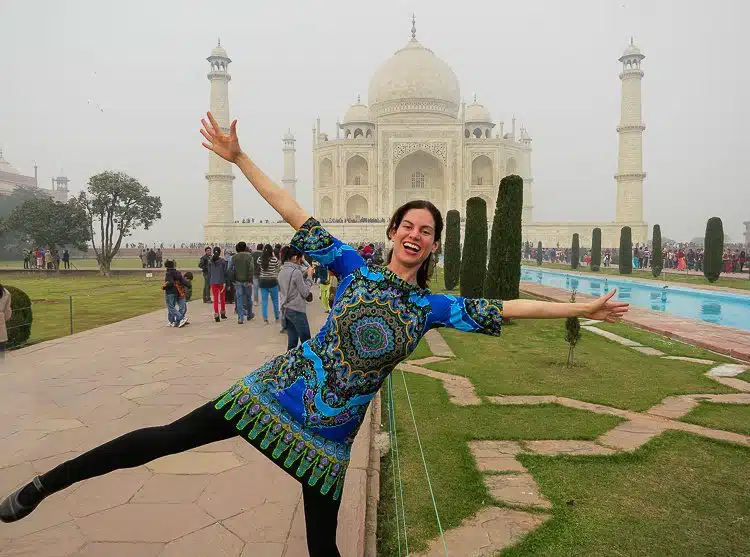
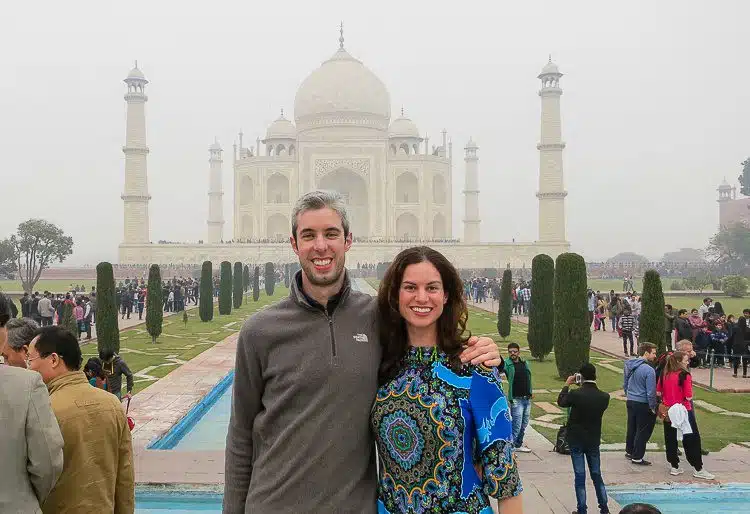
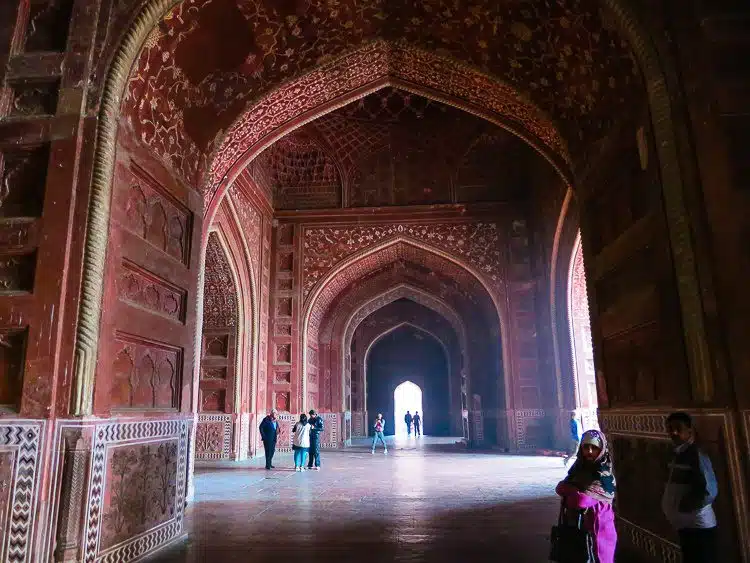
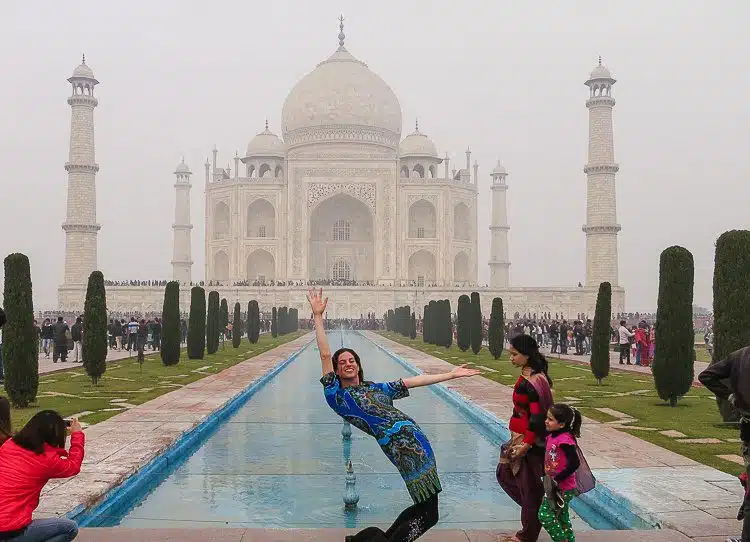
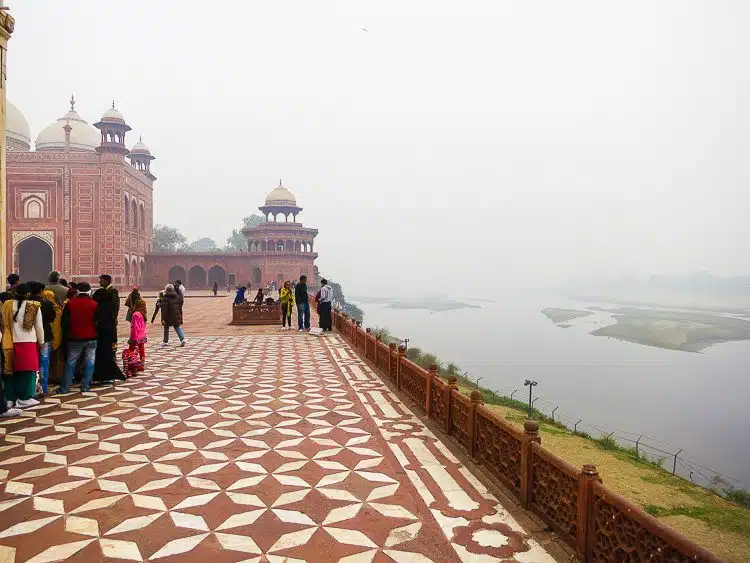
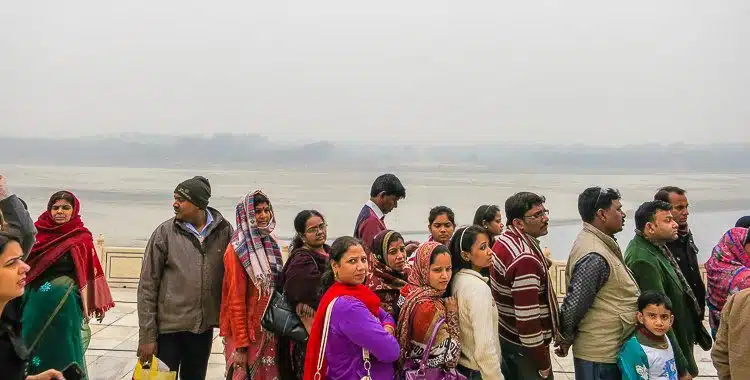
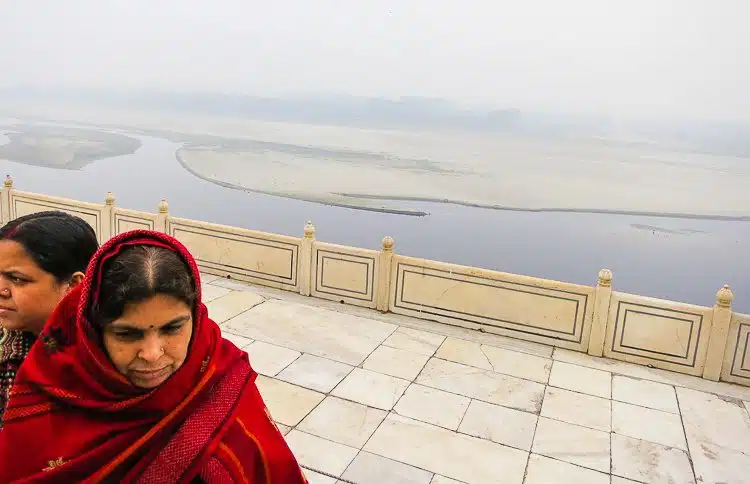
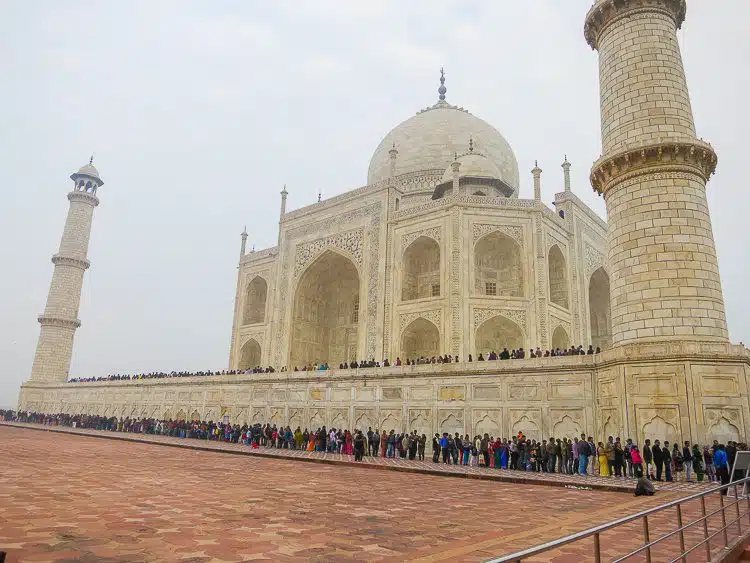
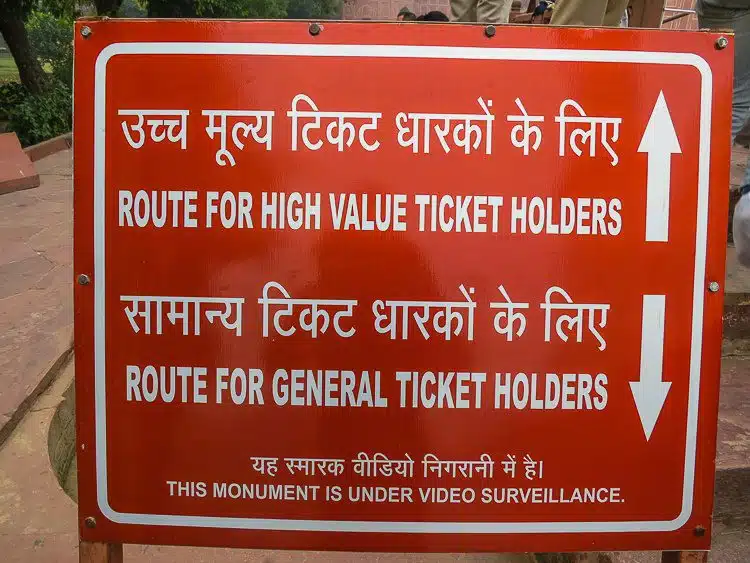
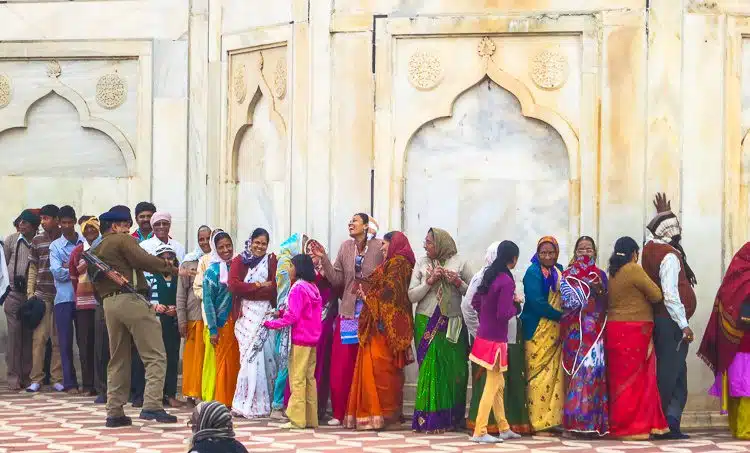
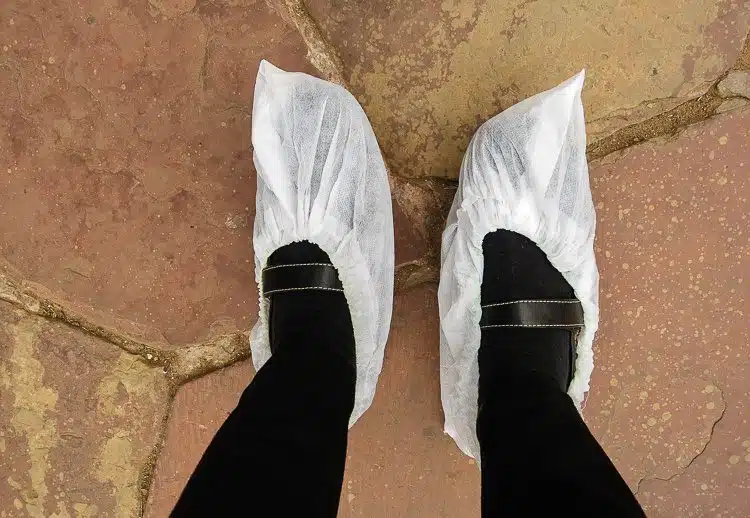
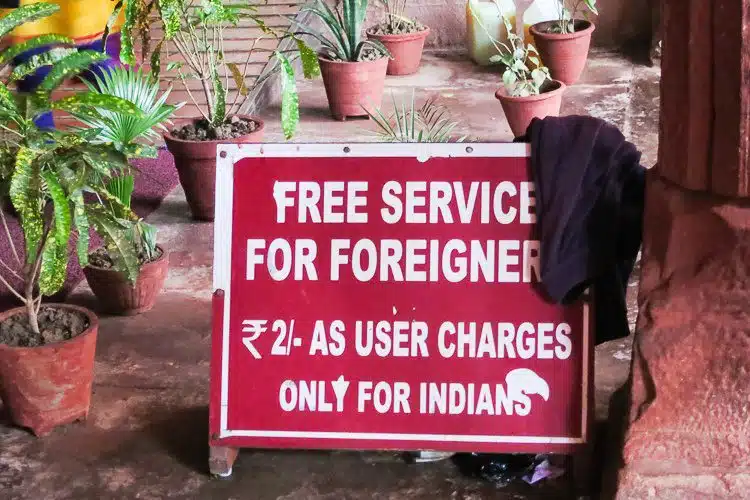

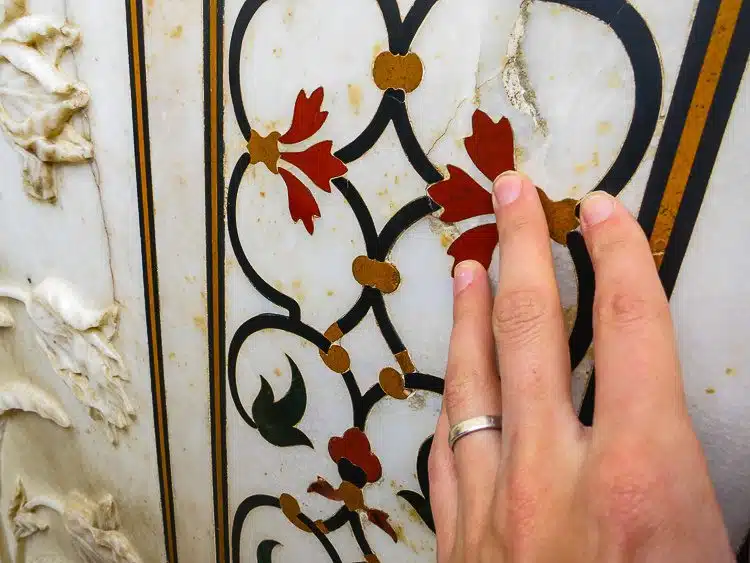
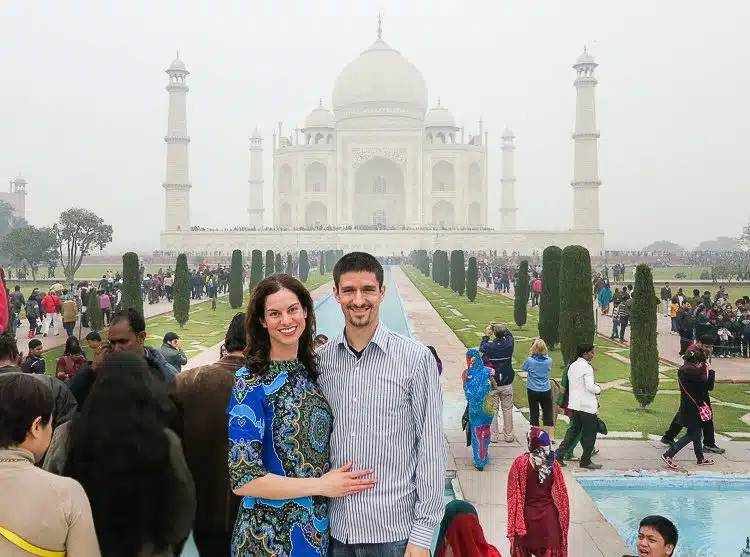
Anshumali
Sunday 17th of October 2021
Hi Lillie, Much more has been written about India, its various cities and uniquely exotic culture and heritage. The way you have put is lucid and engrossing. But I don't find any description regarding Varanasi. Also called as Banaras and Kashi, Varanasi is one of the oldest living cities in the world and considered as the cultural and religious capital of India.
Lillie Marshall
Tuesday 26th of October 2021
Great point! I haven't been to Varanasi but have heard wonderful things.
Roshan Kumar
Tuesday 10th of November 2020
great post. TajMahal is one of the seven wonders of India. You have described the inside view of Tajmahal in such a nice way through amazing pictures. Thanks
Lillie Marshall
Wednesday 11th of November 2020
Thanks for taking the time to read and comment, Roshan!
Heidi
Wednesday 15th of April 2020
The tickets have more to do with the caste system that determines what a person is allowed. You may have noticed there were places into the Taj Mahal that had wood to walk on whereas other places had the marble. Only the higher castes are allowed to walk on the marble, even with booties. It is the same with the restrooms, and the long lines both into the courtyard and into the Taj Mahal itself. There are four castes that define what your "place" is in society and everything in your life is determined by which caste you are born into from where you can go, what you are allowed to do for employment, and even what kind of vessels you are allowed to drink or eat from. There is another tier of caste and that is the casteless, the untouchables, or the Dalits. These are the very poor of India. The belief system of reincarnation and of "karma" determines your place so you might come back in another life in a better or worse caste based on how "good" you are. The Dalits do not have any rights in India, they have no justice system that protects them and are subjects to the other castes. The system was one way to manage the incredible amounts of people who live in India yet has led to a great deal of racism and abuse. It is an interesting study and well worth learning about.
Lillie Marshall
Thursday 16th of April 2020
Heidi, thank you for taking the time to write this out. Very helpful!
Sakhi
Wednesday 20th of November 2019
It's not a swamp at the back. It's the Yamuna river.
Lillie Marshall
Wednesday 20th of November 2019
Thank you for that important clarification, Sakhi!
Sarah
Thursday 6th of June 2019
Agra is just an amazing travel destination, I have been there twice. I would love to go back again and again. I love the Taj a lot.
Thanks for your amazing travel guide and your photos are mind-blowing.
Lillie Marshall
Thursday 13th of June 2019
Thanks, Sarah!